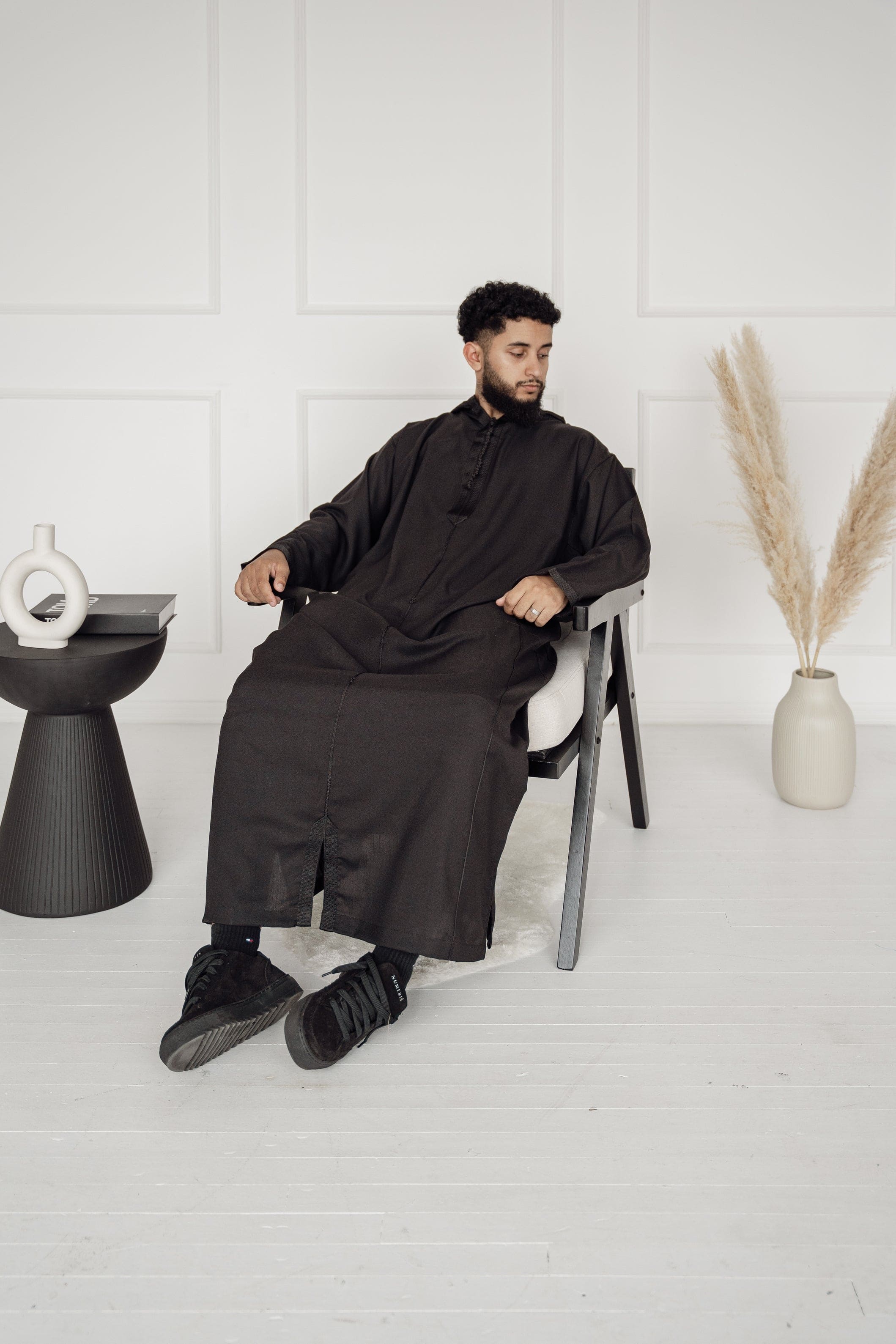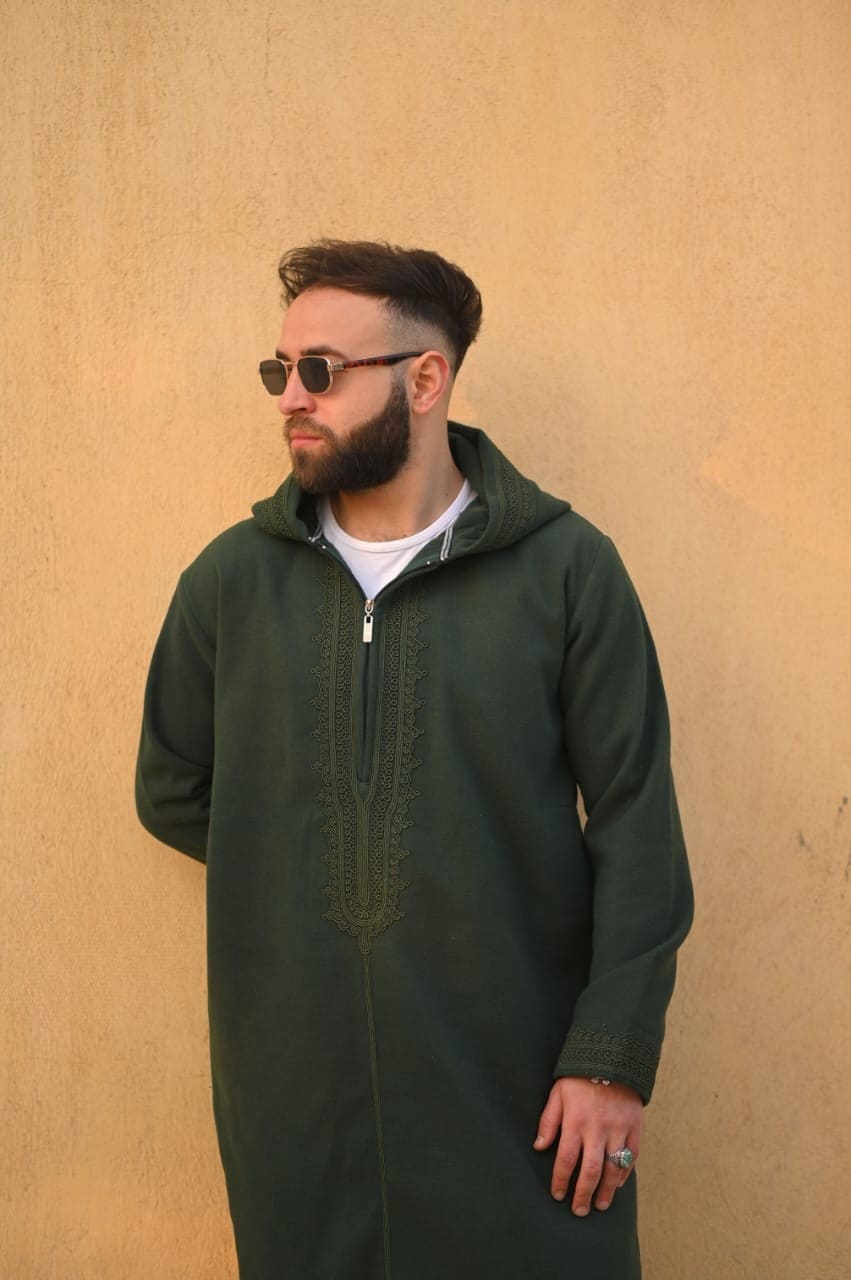The Arabian Peninsula's traditional dress is not only a sign of cultural heritage but also a reflection of its people's rich history and different lives. The thobe, also known as dishdashas or kanduras, is one of the most iconic clothes in the Arab world. Men throughout the Gulf area wear these flowing robes, with each nation putting its spin on the style. However, it is vital to pin down the differences and compare Emirati vs Saudi thobes. Delving into the detailed features, cultural importance, and style variants shall unfold the distinctive characteristics of each robe.
The Importance of Thawbs
Before revealing the features of Emirati vs Saudi thobes, let's acknowledge their mutual significance. Tobes are more than simply a piece of apparel; they represent tradition, modesty, and individuality.
The Emirati Thawbs
Emirati robes exemplify the UAE's dedication to preserving its traditional legacy while embracing modernity. Here are some distinguishing characteristics of Emirati tobes:
Their simplicity and graceful style distinguish Emirati robes. They are generally ankle-length, straight-cut, and have long sleeves. Emirati necklines are typically round or V-shaped, with minimal ornamentation.
Emirati dishdashas are made of high-quality fabrics to provide comfort and longevity in the region's hot, dry climate. Cotton is a common choice due to its breathability. However, rich materials, such as silk or linen, may be used to make more sumptuous robes.
White is the most common colour for Emirati dishdashas, representing purity and simplicity. However, thawbs of different hues are also seen, especially at special occasions or ceremonies.
Emirati men frequently wear their kanduras with a number of accessories, including the ghutra (headscarf) and agal (black rope used to tie the ghutra in place). These items give a personal touch as well as cultural importance.
The Saudi Thawbs
Saudi tobes have unique features that represent the kingdom's historical and cultural identity:
Saudi robes are often longer than Emirati thobes, reaching the ankles. They have a loose and wide-cut style that allows for more ventilation and comfort in the scorching desert heat. Saudi robes' sleeves are likewise longer and broader.
Saudi robe-like outfits are often made of cotton or a piece of cotton-blend fabric, which makes them ideal for the Saudi Arabian climate. When compared to Emirati tobes, the cloth is usually thicker and more robust.
While white is the most popular colour for Saudi dresses, there is a more extensive range of hues available, including beige, cream, and light grey. These variants allow Saudi men to exhibit their particular style subtly.
Saudi males frequently wear a head covering called the iqal with their thawbs. The iqal, a black rope that holds the ghutra in place, is a mark of Saudi pride and heritage.
Cultural Importance
Both Emirati vs Saudi tobes have cultural significance, which is evidenced by the following characteristics:
The thobe is not only a sign of national pride in the UAE, but it also shows the Emirati people's devotion to their Bedouin history. It is a symbol of simplicity and humility, stressing modesty and tradition.
The thobe is a source of solid cultural pride in Saudi Arabia. It symbolises the kingdom's historical and theological importance, as Saudi Arabia is home to Islam's two holiest cities, Mecca and Medina. Saudi robes' loose and comfy form is ideal for the long and scorching desert trips that have been a part of the country's history.
Variations Between Emirati vs Saudi Thobes
While Emirati vs Saudi thobes share common roots, their styles have evolved differently through time, resulting in various variations:
For everyday activities, Emirati men often wear basic white robes. These dresses are plain and unadorned, emphasising comfort and functionality. In contrast, the classic Saudi tobe is distinguished by its long length, broad sleeves, and simple pattern. It is the most common choice for everyday wear.
Emirati men may choose more costly robes with delicate stitching and subtle motifs for formal events. These dresses are frequently stitched of better materials, such as silk. On the other hand, Saudi men may pick robes with elaborate embroidery, ornate buttons, and contrasting piping for important events and ceremonies. Such attires are a statement of sophistication and heritage.
Final Thoughts
The thawb is more than simply an item of clothing on the Arabian Peninsula; it is a sign of identity, tradition, and cultural pride. Although Emirati vs Saudi thobes have a similar ancestor, they have specific traits that distinguish them. Emirati dresses emphasise simplicity and purity, but Saudi robes reflect the kingdom's rich culture with a fabulous selection of designs and colours.
Whether you like the subtle beauty of an Emirati dress or the timeless appeal of a Saudi tobe, one thing is sure: New Arabia Thobes Shop UK brings these traditional clothes as a source of pride and a tribute to the Arabian Peninsula's legacy. Take a minute to admire the rich intricacies and cultural importance sewn into every thread of a man's robe the next time you see one in the Gulf area.


